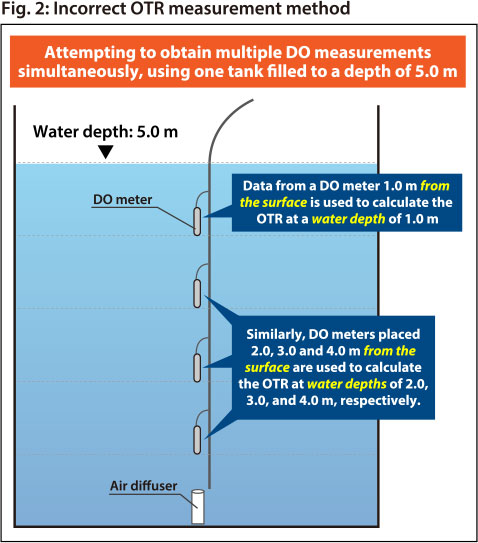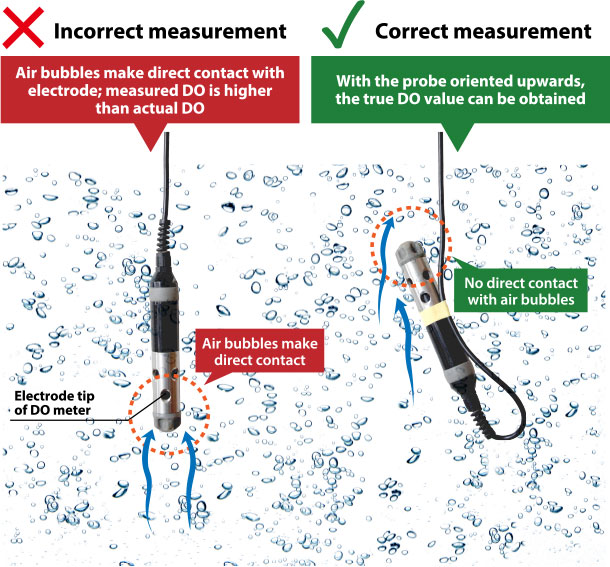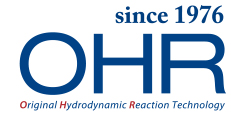Don’t be deceived by Oxygen Transfer Rate (OTR) measurement tricks
No unified standard for OTR measurement exists in Japan
The OTR data published by air diffuser manufacturers is crucial in allowing buyers to make accurate judgements about diffuser performance. However, Japan has not established a unified standard for OTR measurement. Every company uses their own method. (Although the Japan Sewage Works Agency has established such standards, this does not guarantee that all companies comply with them.)
Take, for example, the measurement of fuel efficiency in cars: this is governed by strict standards, allowing buyers to make fair assessments and comparisons between different makes and models. For OTR, however, there has never been such a common standard.
While there is, of course, no issue with measuring performance using any of the existing scientifically-sound methods, some manufacturers of air diffusers use methods that are flagrantly unsound to obtain impossibly high performance data, which they then proceed to advertise.
Below are some important points to bear in mind when it comes to measuring OTR.
Measuring OTR the correct way
Point 1: Water depth
The deeper the water, the higher the pressure, and therefore also the higher the OTR. Thus the correct way to measure OTR is to fill the tank with a specific depth of water and obtain the data individually in each instance (see Figure 1 below). For example, suppose you have just obtained OTR data at a water depth of 3.0 m. Now you should completely drain the tank, refill it to a new depth of 3.5 m, then measure the OTR once again.
Continue in this fashion until all required data has been obtained. This is the basic, albeit somewhat labor-intensive, procedure for measuring OTR.

 One particular air diffuser manufacturer has been filling the tank to a depth of 5.0 m, setting up multiple DO meters at every desired measurement point, and measuring OTR at every water depth simultaneously (see Figure 2 at right). This method is capable only of measuring OTR under favourable conditions at 5.0 m, and is flagrantly unsound.
One particular air diffuser manufacturer has been filling the tank to a depth of 5.0 m, setting up multiple DO meters at every desired measurement point, and measuring OTR at every water depth simultaneously (see Figure 2 at right). This method is capable only of measuring OTR under favourable conditions at 5.0 m, and is flagrantly unsound.
In spite of this, the company in question uses these impossibly high OTR values in its advertising, claiming that their diffuser is “highly efficient”.
Point 2: Position and direction of DO meter’s electrode tip
While OTR testing involves completely eliminating the DO (e.g. by adding a reducing agent such as sodium sulfite), then beginning air injection and measuring the increase, setting up the DO meter correctly is also vital. The two key points are:
1. OTR cannot be measured correctly if clusters of air bubbles make direct contact with the electrode.
Be certain to set up and orient the DO meter in such a way that rising air bubbles do not hit it directly.

2. When the DO meter is placed in the water for testing, the electrode will naturally point downwards, in which position air bubbles will accumulate around the electrode and artificially inflate the measured DO value.
The correct method involves bending the cable back on itself and securing it to the probe using waterproof (e.g. vinyl) tape, which ensures the electrode remains pointing upwards (see diagram at right).
Only by following this method can DO be measured accurately. Unfortunately, the majority of companies conduct their tests with the probe pointing downwards, which results in invalid data that counts undissolved oxygen as if it were dissolved.
Point 3: Water temperature
The laws of physics tell us that DO values are highly dependent on water temperature. And when aerating with an air diffuser, the heat of compression from the air blower causes a corresponding rise in water temperature; it is therefore vital to use a data logger (recorder) to continuously record both the water temperature and the DO over the course of the test, and to include all of this data in the final report.
Put another way, any test report that does not include such data is to be regarded with suspicion.
Always send for and scrutinize the OTR test report
The only way to confirm whether an air diffuser manufacturer’s published OTR data was measured using legitimate methods is to obtain a copy of the test report. Be especially cautious in cases where a company advertises OTR values much higher than its competitors’. There is even one company who have not conducted any tests whatsoever, and whose brochures feature entirely fictitious data.
OHR test reports: clear and transparent
While we naturally conduct our own strict performance tests to obtain OTR data for the OHR AERATOR, there is also a test report from a third party who conducted their own. Both this report and ours are available upon request; please contact us at your convenience.












